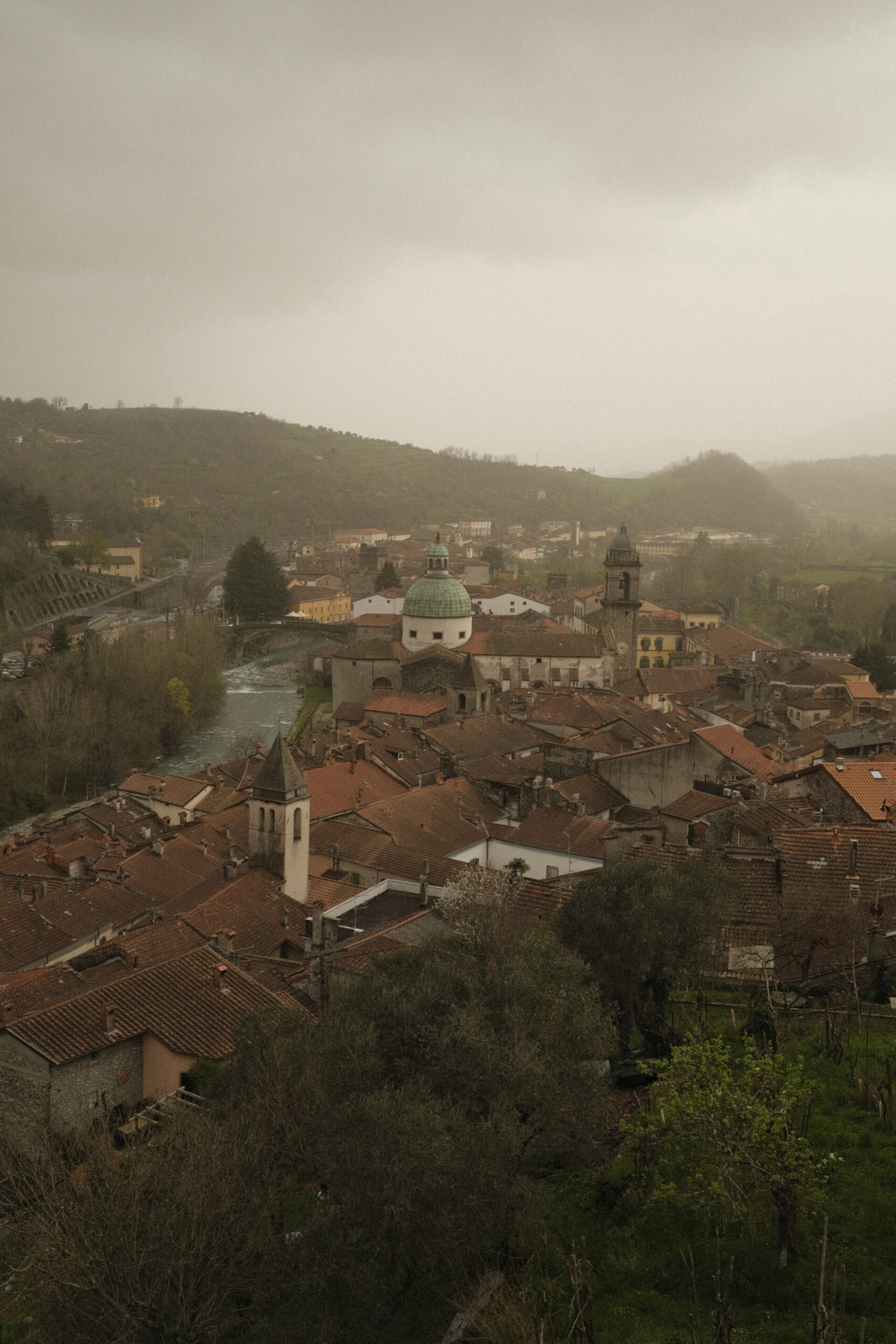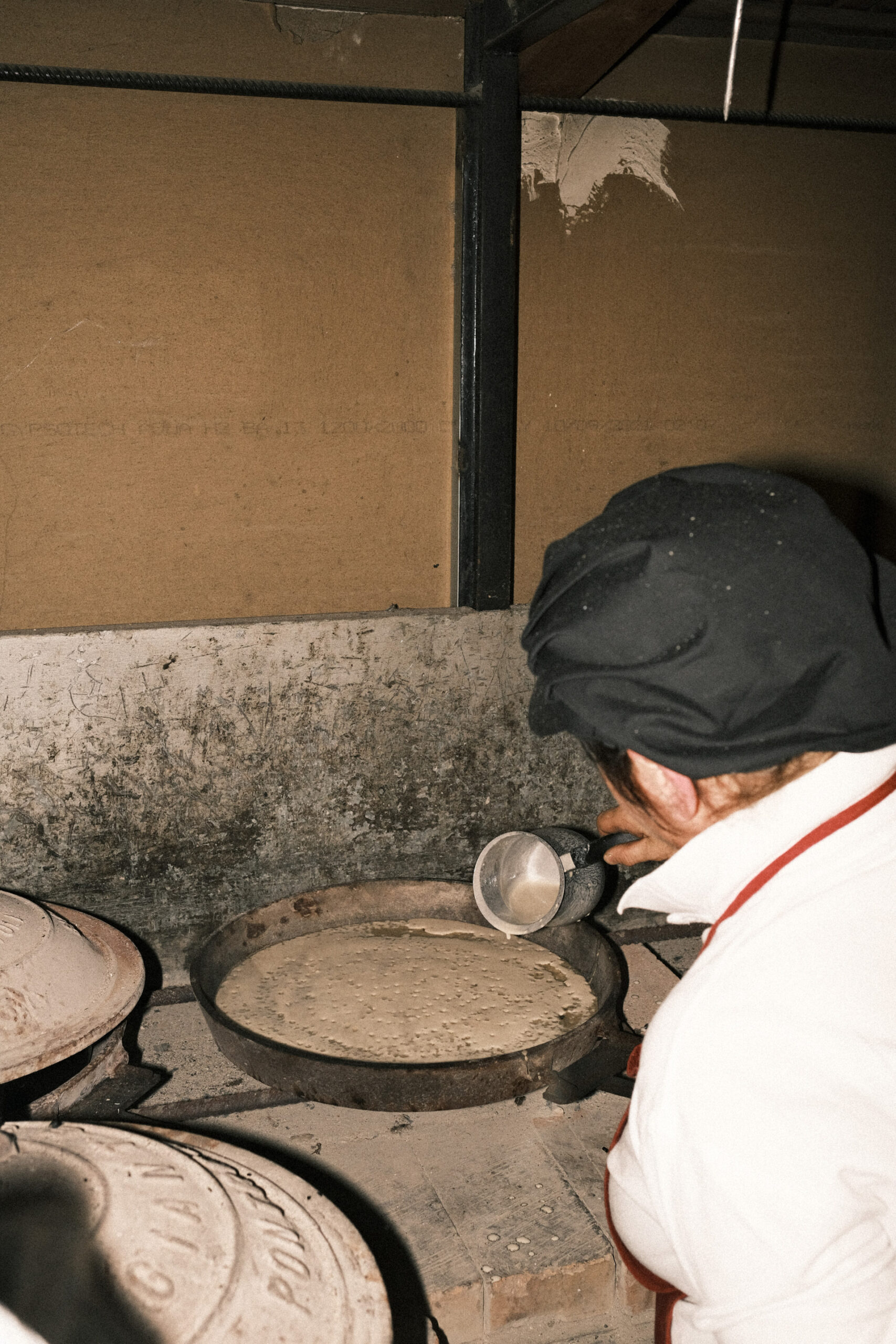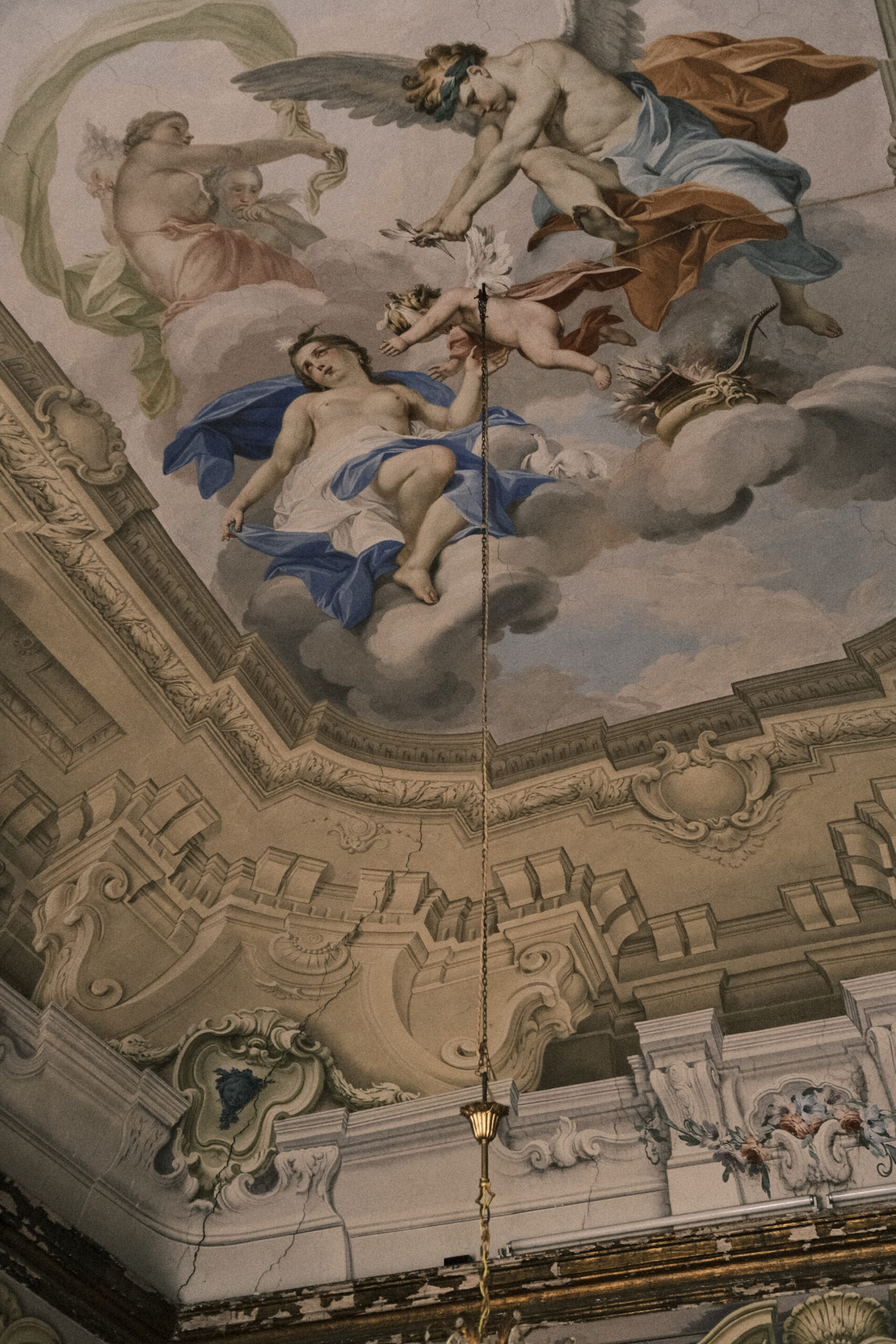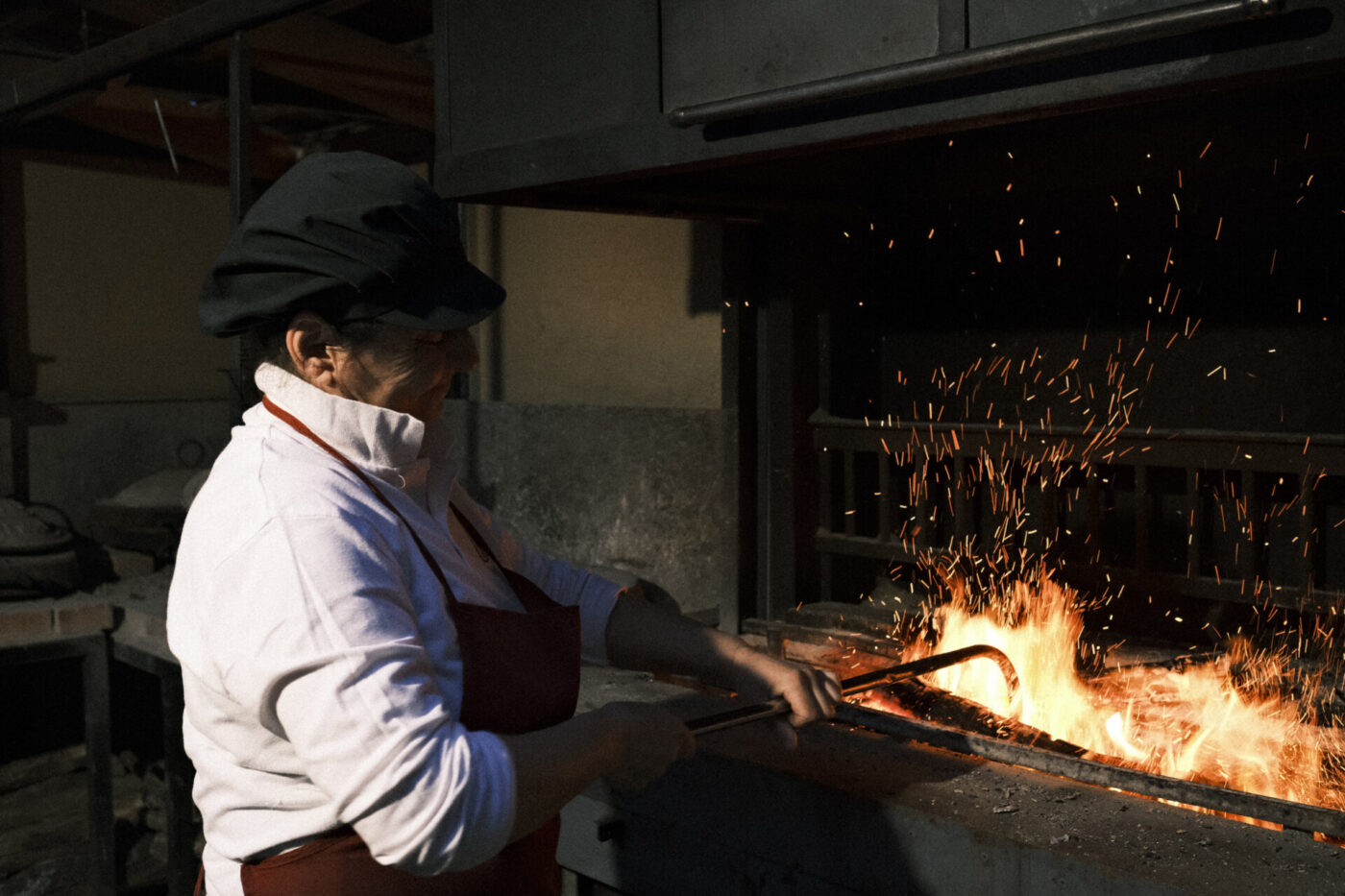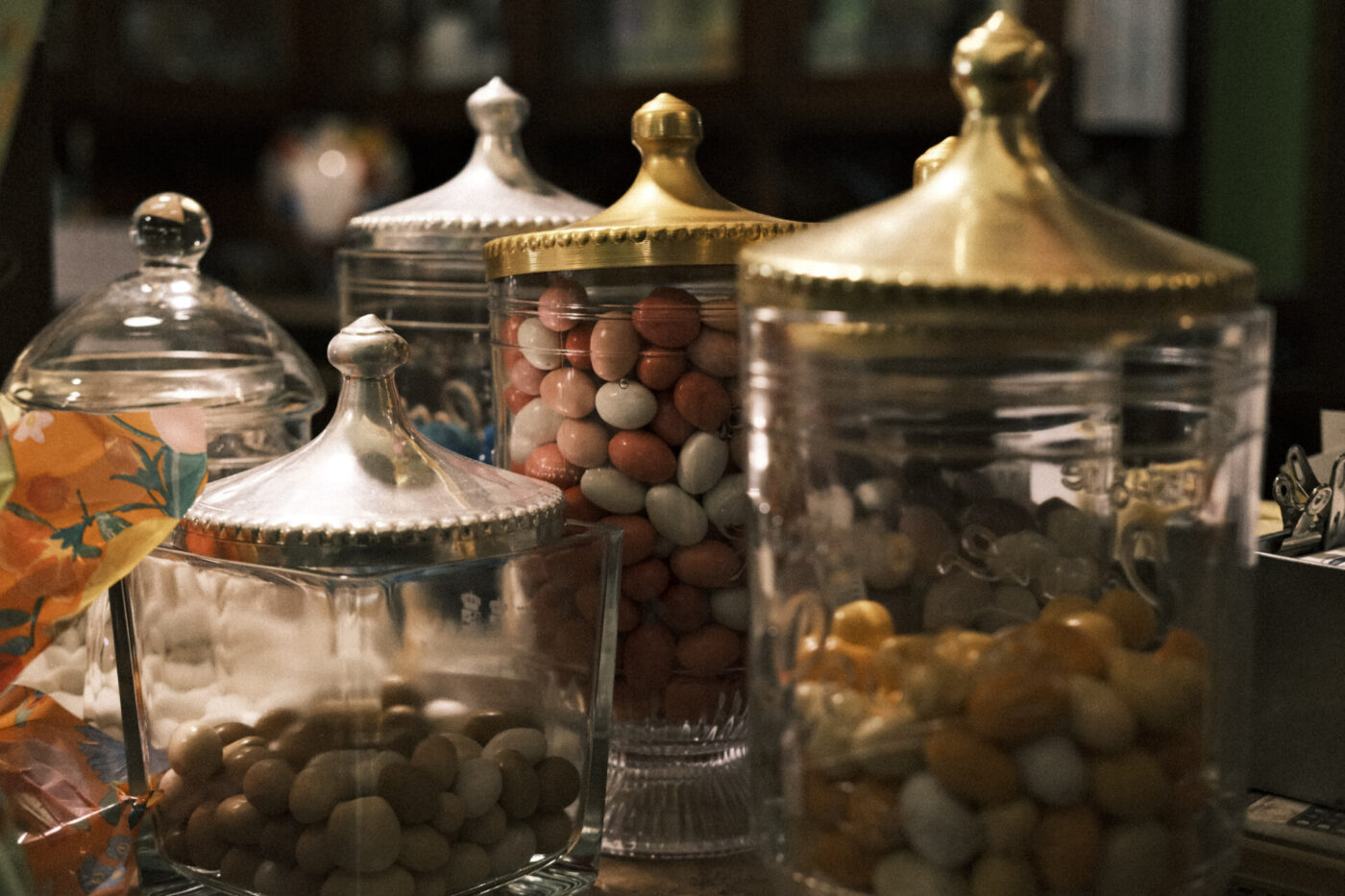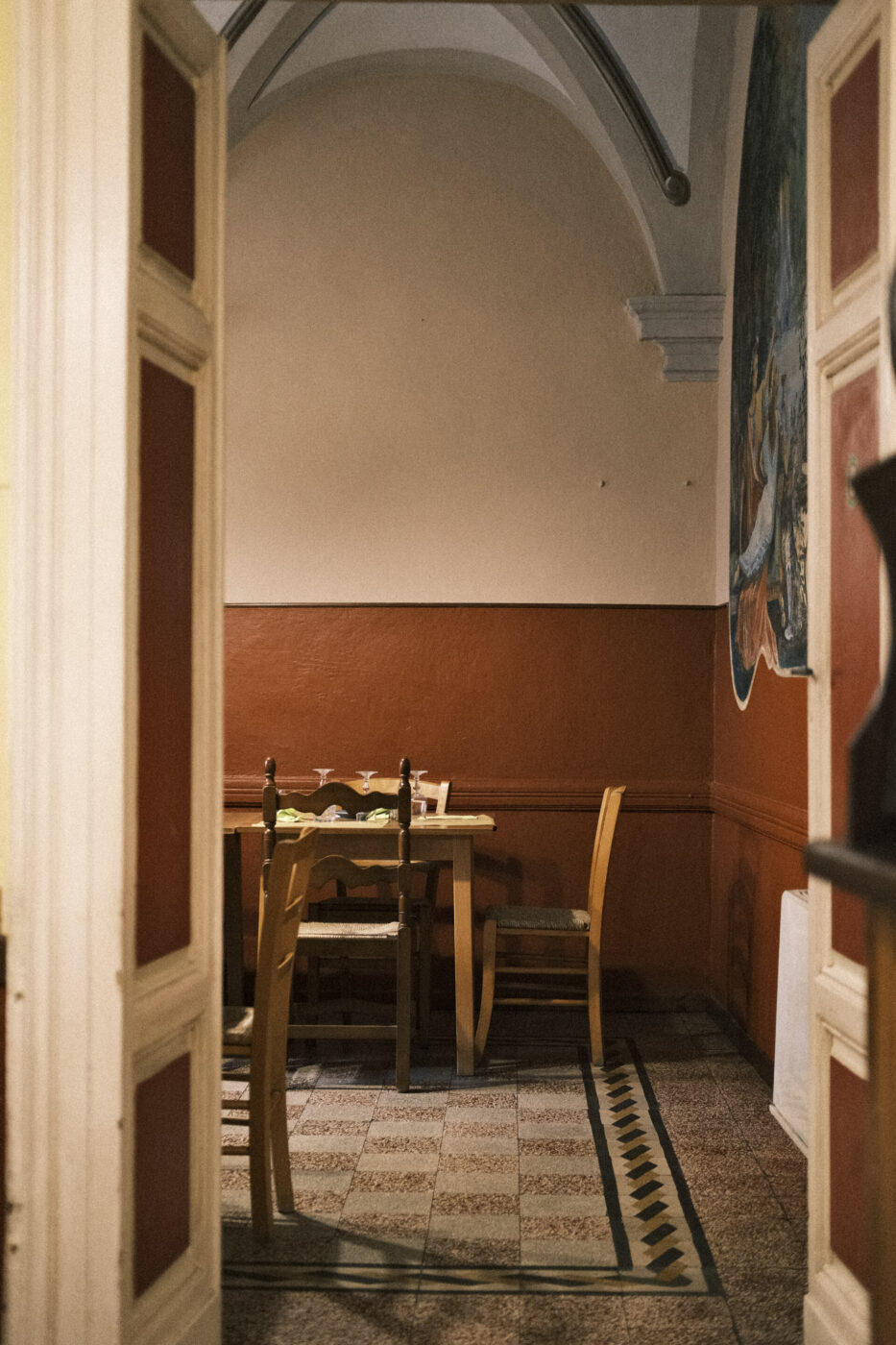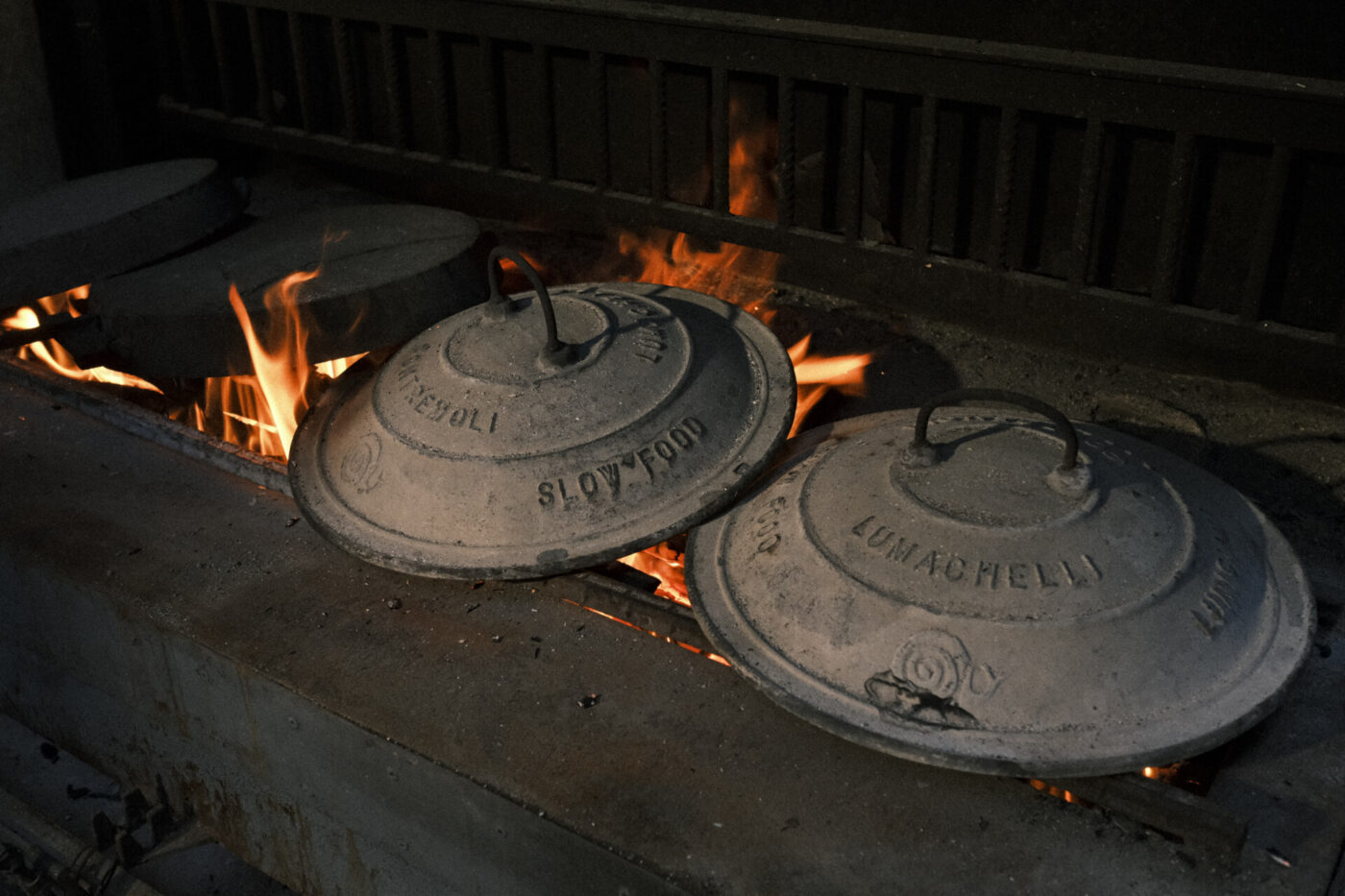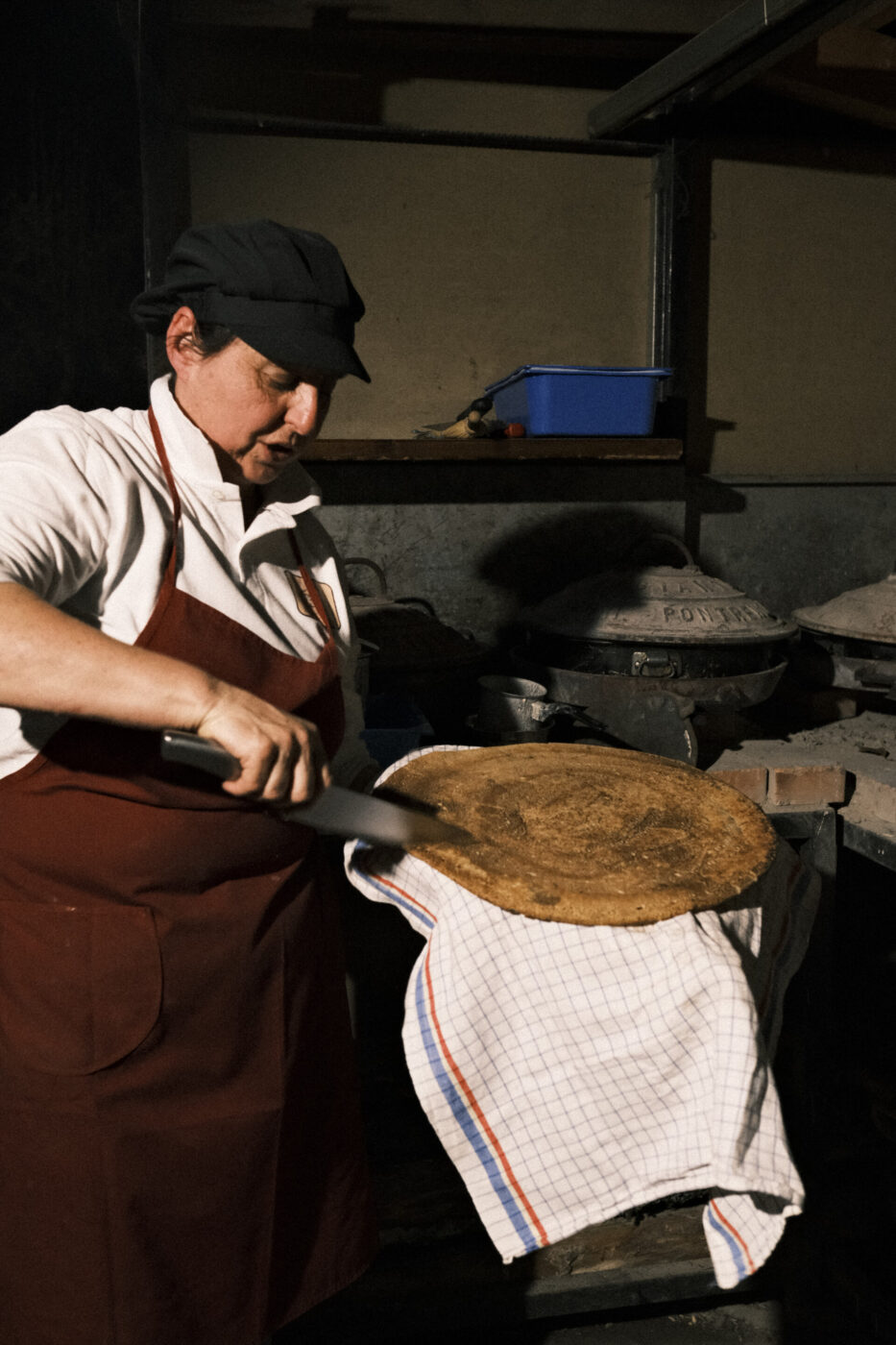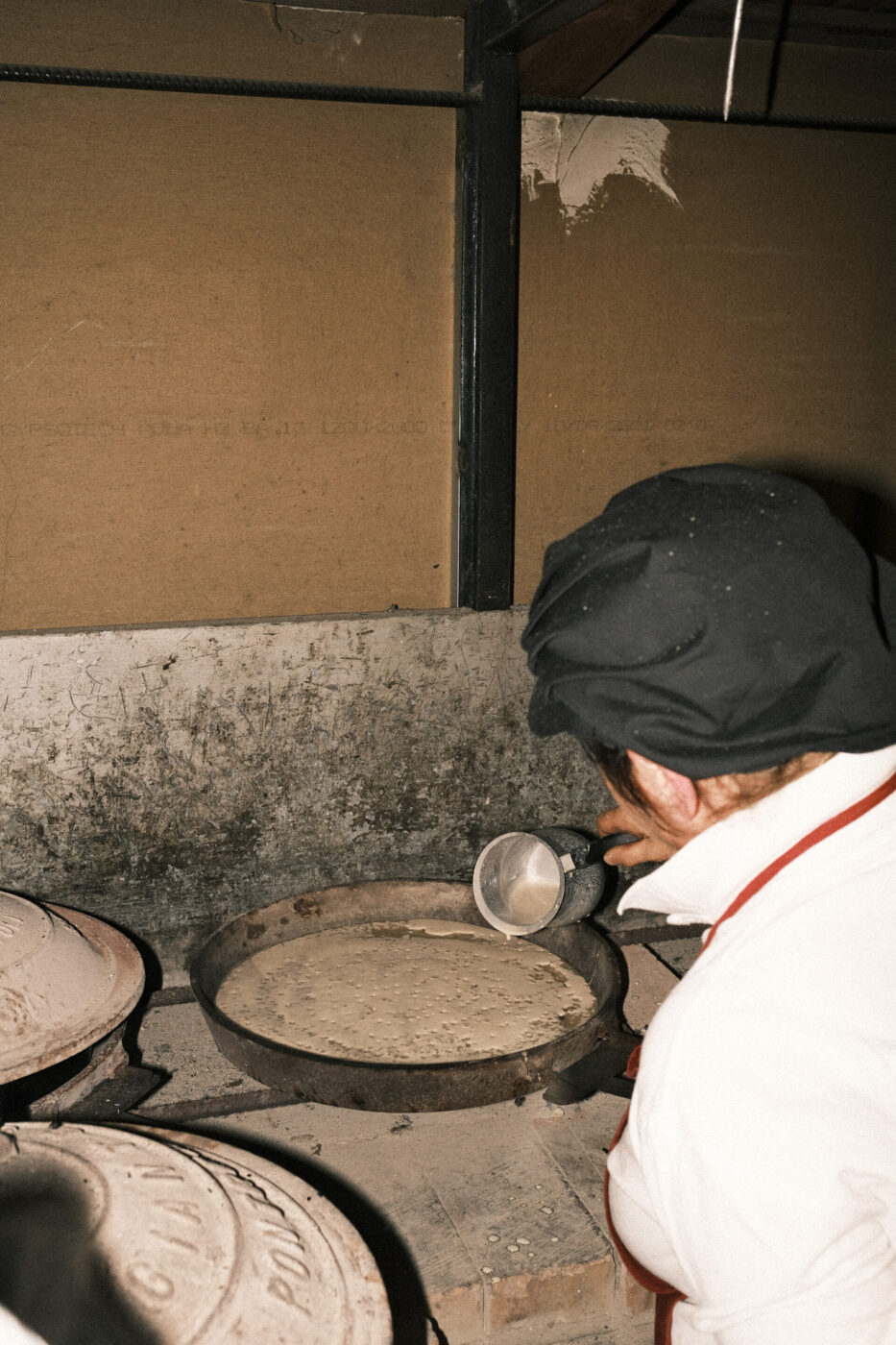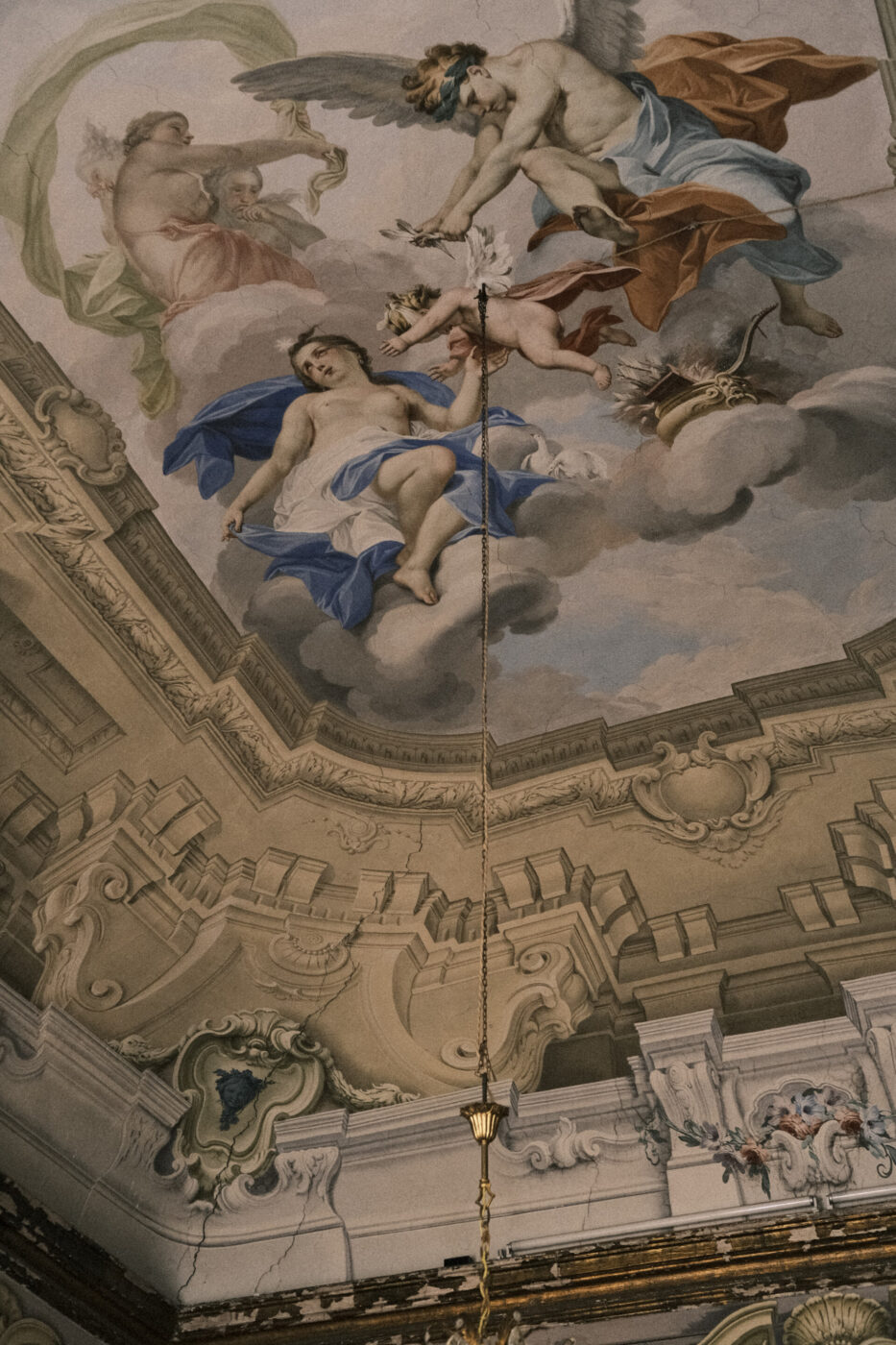There’s a place that’s rarely shown on travel guides, tucked away as it is between the rugged Ligurian Levante and the Tosco-Emilian Apennines, more a crossing point on the way to somewhere else than a destination in itself.
Lunigiana has always been a liminal place, a land straddling multiple identities and histories. Its strategic importance as a gateway to Europe was understood as early as 177 BC when the Romans founded the city of Luni, then a military outpost on the river Magra. During the Middle Ages and through the Renaissance, it was the preferred route for millions of pilgrims traveling along the Via Francigena to Rome. Dante mentions it in his Divina Commedia; in Canto XX he speaks of it as a spelonca–that is, a cavern–set among the white marbles of Carrara from which one can look both at the sea and the stars. For centuries the region was disputed by the neighboring powers of Genovese, Milanese, and Tuscan lordships (hence its many castles and the fact it’s now split between Liguria and Tuscany). All the same, for all its rich history and culture, likely because of its mostly mountainous landscape, Lunigiana remains a place often underexplored and misunderstood–and one that gradually disappeared from maps as its strategic importance as a “gateway to Europe” declined with the discovery of the New World and the shift of world trades toward the Atlantic.
As people coming from a similarly overlooked place nearby (Piacenza), we grew up speeding through Lunigiana, often wondering what lay beyond the Cisa, the infamously tortuous motorway that winds across it. So when our friend, octogenarian bon vivant Giuseppe, and his wife Anna–who moved to Lunigiana’s Sarzana in the mini tourist boom of the 1980s–invited us to spend the Easter weekend with them, it was impossible to say no. Anxious to find things to do, we soon embarked on a quest to find the Holy Grail of Lunigiana: the testaroli, a sort of rudimentary pastasciutta (or perhaps better described as pancakes?) cooked in special cast iron pots called testi, made burning hot on an open fire. A local delicacy, which–because of the laboriousness of the process and the memories of penury it evoked–was typically prepared only at home until quite recently, they had popped up on one of our Instagram feeds, generously dressed in bright green pesto as a contemporary homage from a London-based chef. The photo–in which one testarolo was cut into pieces and looking more like a crepe or a chickpea farinata–did little to prepare us for the real thing. These triangular pasta strips have a chewiness which makes the taste of the sugo linger just a little longer and a unique spongy texture similar to that of Ethiopian injera.
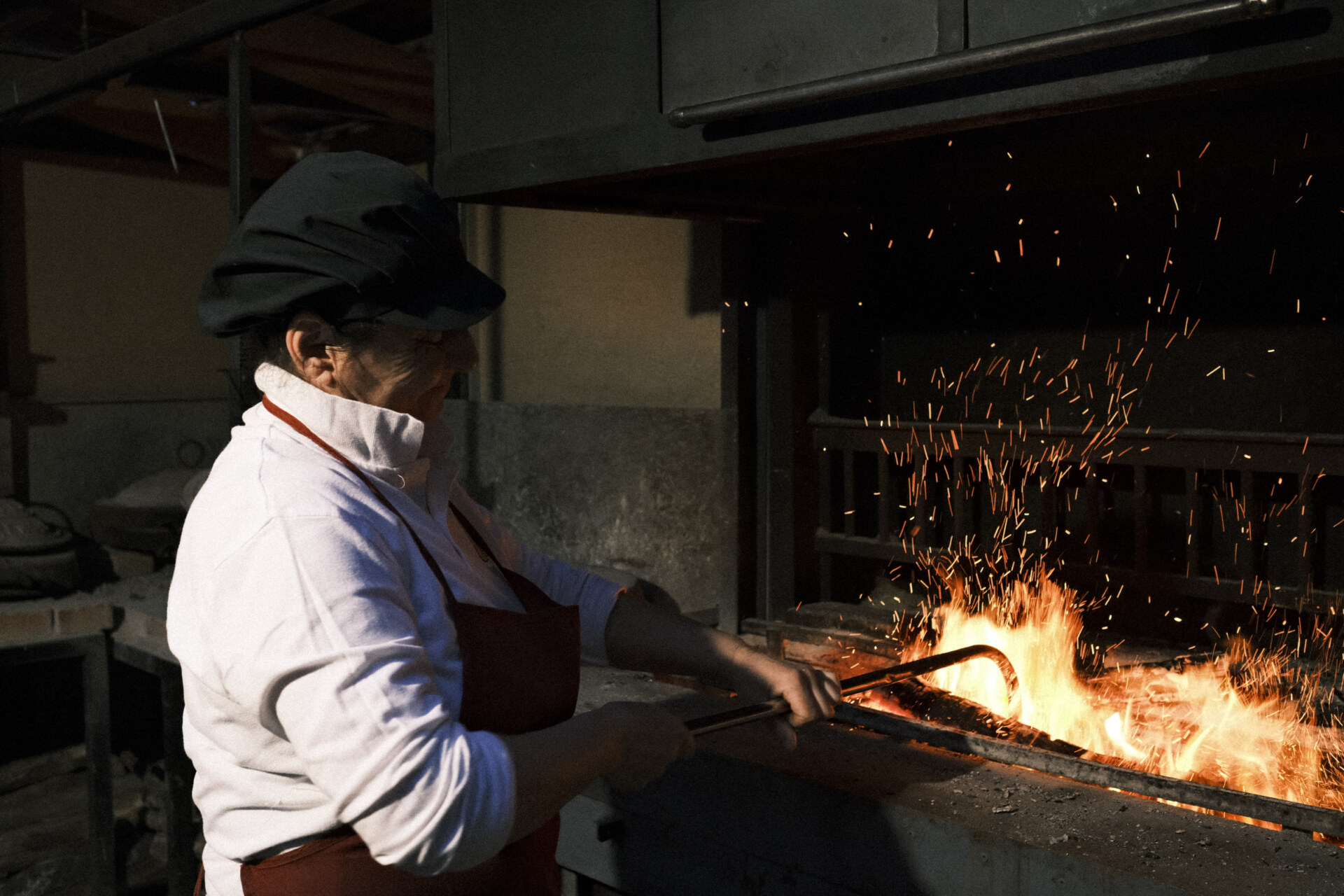
Katia tending the fire at La Vecchia Cascina
Sarzana & Pontremoli
Our journey starts relatively early in Sarzana, the so-called “little Lucca” because of the fortified walls built by Lorenzo il Magnifico. There, we have a chance to try spungata–a sort of elongated eccles cake meant to keep for weeks, the most representative dolce of the area–at Pasticceria Gemmi, which, encased in the vaults of a 16th-century convent, still greets customers with the same opulent decor as it first opened in 1934. It’s Good Friday, and the town’s small rituals are already in full swing: people queue in front of bakeries and ortolani, little cafes are hounded by people willing to enjoy the feeble sun, and orders of spritz and vermentino start to pour in even though it’s not yet 11 AM. The temptation to stay is real, but soon we leave Sarzana and take the way of the Apennines.
In Pontremoli, we meet local historians and Lunigiana authorities Luciano and Natalino who after another slice of spungata pontremolese at the iconic Caffè degli Svizzeri–“a six-family building will have six different versions of spungata”–tell us about the town’s identity-giving Baroque palaces.
These palaces, previously owned by Pontremoli’s mercantile families, are normally open to visitors only once a year, during a dedicated festival in April. Thankfully, Luciano has his own keys and the private tour that follows is a little bit like being in a miniature version of La Grande Bellezza. As he and Natalino walk us through the empty rooms of the Dosi Magnavacca palace, they tell us that the frescoes are a unique example of quadrantismo–a Baroque pictorial style which, to create a sense of opulence and pomp, would heavily rely on quadratic painted frames and trompe l’oeil. Afterwards, they send us to lunch at Trattoria Norina, a family-run restaurant similarly encased in a frescoed building.
At Norina, we try for the first time testaroli which, “dressed” in pesto and accompanied by a few glasses of ridiculously drinkable vermentino, are a revelation. Lusciously, brightly green and still steaming, they are simply the perfect lunch for a long rainy day.
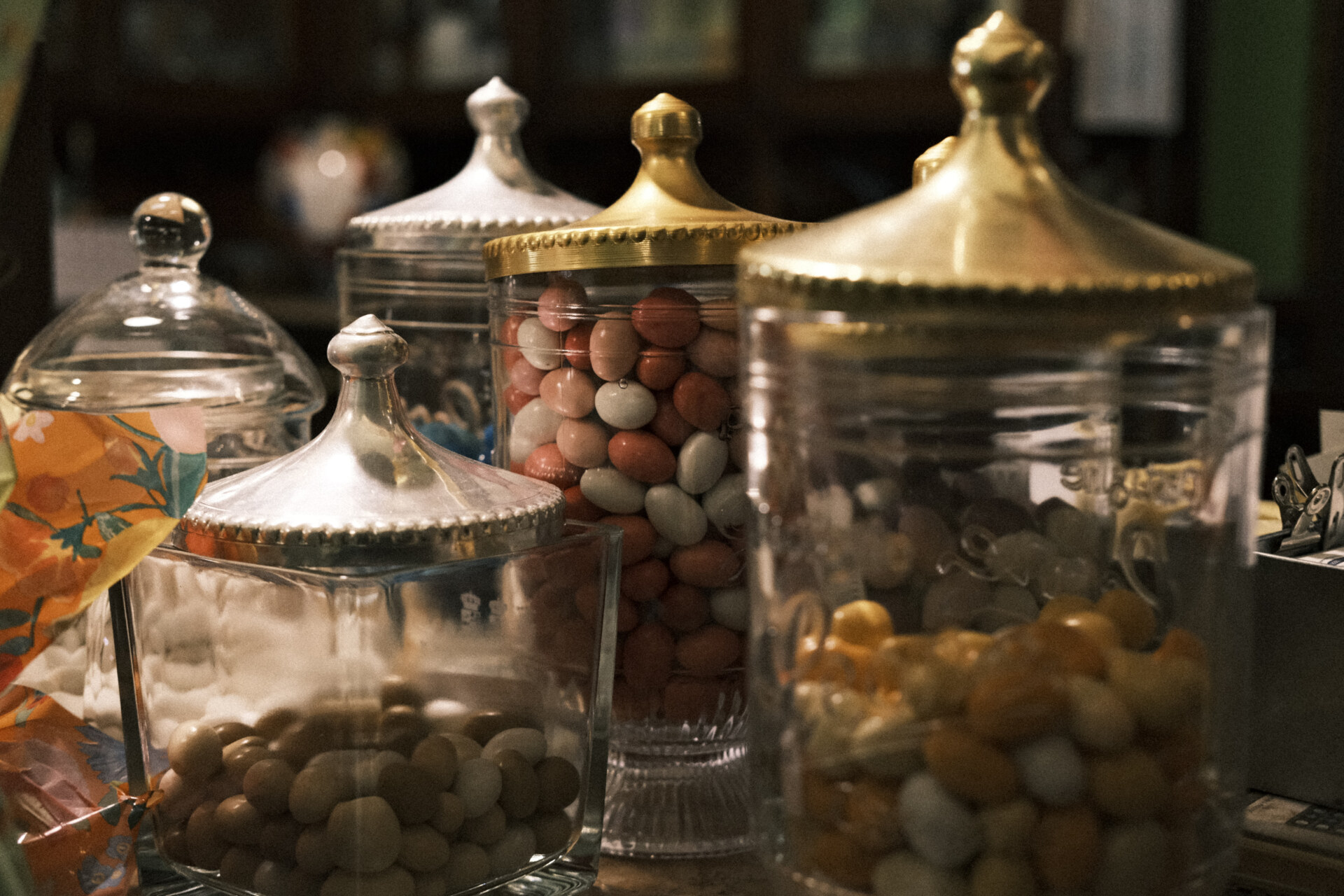
Caffè degli Svizzeri, Pontremoli
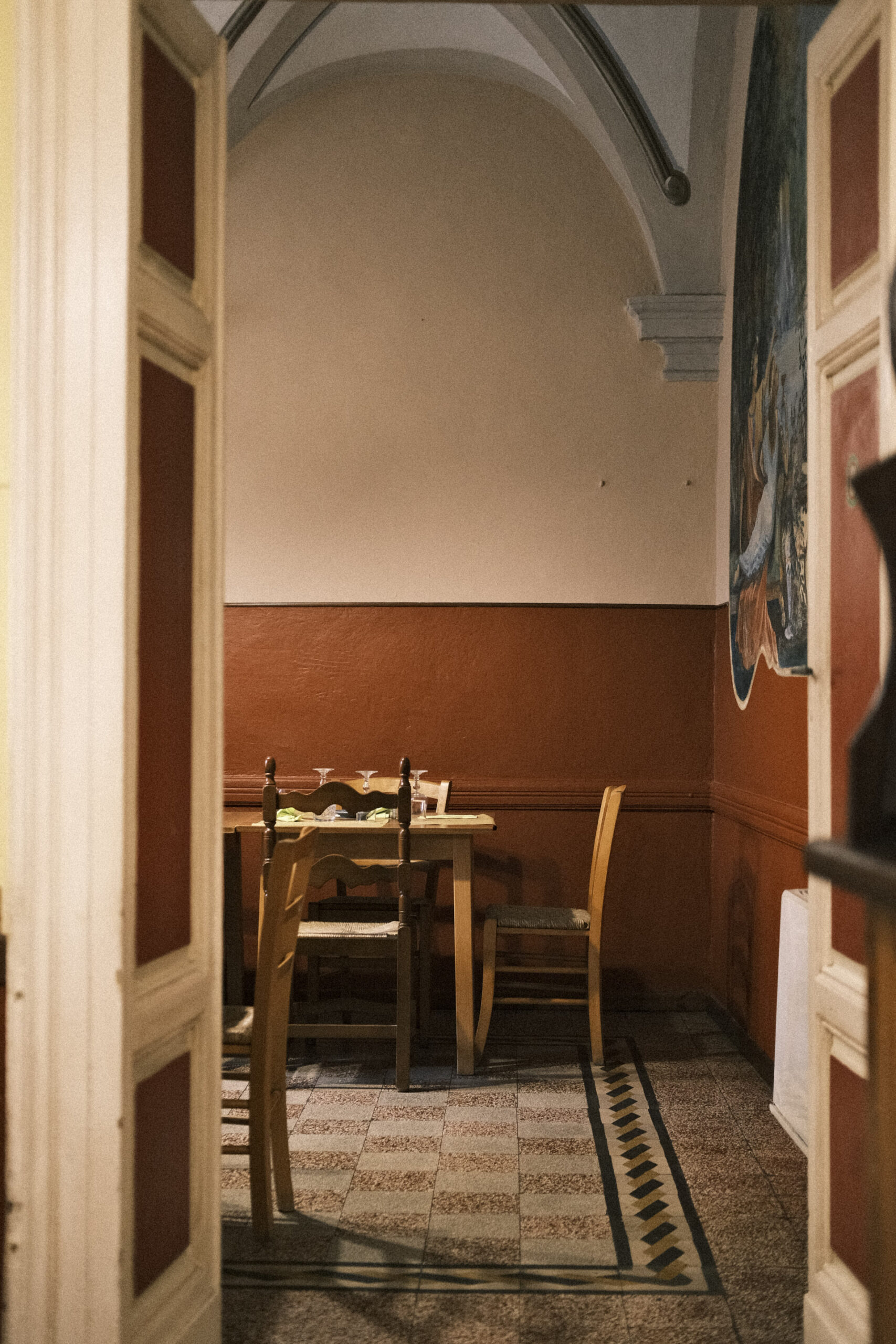
Trattoria Norina
La Vecchia Cascina, Tarasco
Our trip isn’t just about trying a new kind of pasta, but looking for a glimpse of that “cucina povera e umile fatta di ingenuità” (“poor and humble cuisine, made of ingenuity”), as Paolo Conte calls it in one of his most melancholic tunes, that’s now almost impossible to find. So Natalino and Luciano put us in touch with one of the few restaurants and agriturismos that make testaroli from scratch according to the ancient, traditional method. After a visit to the castle of Pontremoli and the Museo delle Statue Stele, striking menhirs which would deserve an article of their own, we take the car again and cross the River Magra on the way to Tarasco.
The drive up to the village following the misty, winding road–cattle abandoned to themselves by a crumbling building–tells us we are on the right track. When we arrive at La Vecchia Cascina around 6 PM, Katia is already outside, busy building the fire so she can get the testi ready for the evening service. As we try to find a spot out of the way–the space really looks like a little shed or blacksmith workshop in front of the restaurant–we are hit by the smell and restoring warmth of the fire, an antidote to the incoming darkness and humidity.
We’d read and heard extensively about testaroli and how to make them, yet we’re a little lost and Katia proceeds to illustrate to us the peculiar set up of her “cucina nera”–literally, “black kitchen”–a layout, she explains, which was originally conceived for the desiccation of chestnuts. For centuries, it would be the most common means of sustenance in these parts. She shows us the barbecue, thin and long like a Japanese yakitori grill or a Turkish ocakbasi, upon which, at regular intervals, she throws long pieces of chestnut wood. She then moves the testi themselves to the fire; these cast iron, almost tagine-shaped pots are composed of a base called sottano and a conical cover called soprano. They’re so heavy that she has to use a strange contraption, similar to a mechanical arm, to move them around–and all of this still with great difficulty.
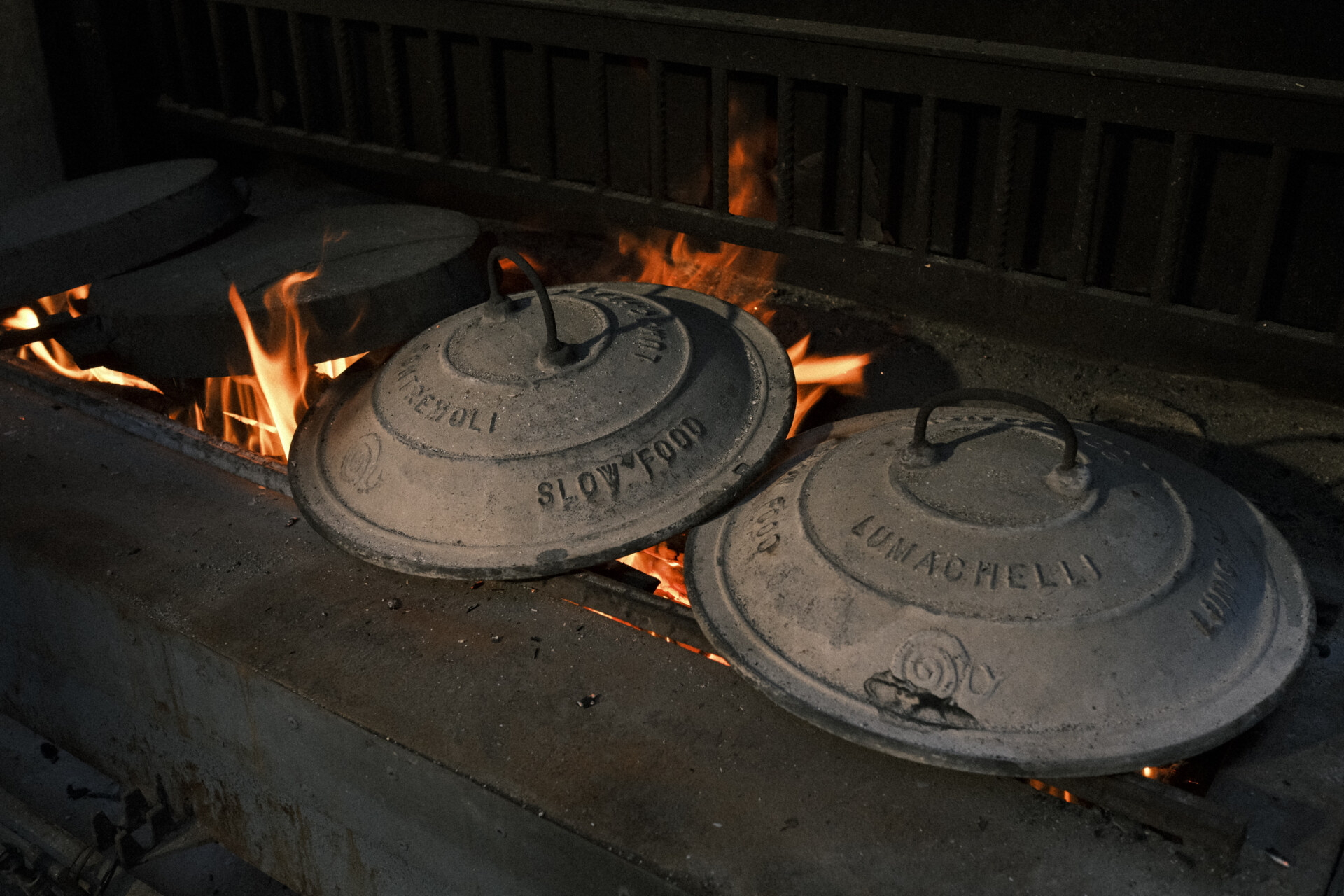
Heating up the testo soprano at La Vecchia Cascina
The agriturismo makes a point of cooking 90% of its menu in the testi, and this takes just short of two hours to perform, even on a slow night. As Katia starts to bring in the ingredients and move the testi around, she dispels some of our myths and misconceptions about testaroli.
First of all, the foodstuff is not cooked over an open fire, as the temperature reaches over 500℃. Rather, when sufficiently heated up, the testi are moved to another station where the residual heat can carry out the cooking. But, aside from these technicalities, it’s the very idea of testarolo we have formed–thanks also to lots of local scholarship that celebrates its simplicity and antique origins–that’s flawed. Far from the remnant of Italy bygone–“poor and humble cuisine, made of ingenuity” in Paolo Conte’s words–Katia explains that the testaroli were actually the food of the rich, the only people who could afford the expensive wheat flour used in the batter.
Katia starts with baking carsenta, a local bread similar to tigella, and preparing torta d’erbi, a frittata made of wild herbs as fundamental to Lunigiana’s identity as testaroli and spungata. After this, she moves on to patuna, a chestnut pancake on which most people subsisted for centuries, and pollo arrosto made in the style of nearby Zeri (traditionally, the dish would be prepared with lamb, but the meat delivery was late). All of these are prepared in the same way, using trays which then are thrown into the incandescent testi. Only then, long at last, she starts to prepare testaroli, by pouring the batter–nothing more than flour, water and salt–in a circular motion from the edges of the dish all the way to its center. The temperature of the testi is so hot that the pasta immediately starts to pop and forms its characteristic holes. A couple of minutes, and the testarolo is ready, after which Katia scraps the excess of burnt crust off with a knife.
By the time we sit at the dinner table, she has “revived” the testaroli in boiling water and cut them into irregular strips. (Although ultra crisp when freshly baked, they soon go rubbery and stale and, for that reason, they must be cooked a second time just before consumption). After trying them at Norina, we timidly ask if to have them with pesto, but Katia’s daughter Giulia is categorical: the only proper way to eat testaroli is with Parmigiano and extra virgin olive oil.
A song by Italian popstar Elodie is playing on the TV in the background, and, just for a fleeting moment, we have found that image of Lunigiana, authentic and elusive, we were after.
The next day is similarly packed, but the highlight is a visit Cantine Lunae Bosoni, the winemakers responsible for the success of vermentino ligure and who now, thanks to the work of Diego Bosoni, are rediscovering Lunigiana’s endemic grape varieties that have been mostly forgotten.
By the afternoon, a storm is brewing. The sky is a threateningly dark gray and a gusty wind is blowing. We know better than to overstay our welcome. But next time we speed through Lunigiana on the Cisa, we already know there are places we’ll make a point of stopping for.
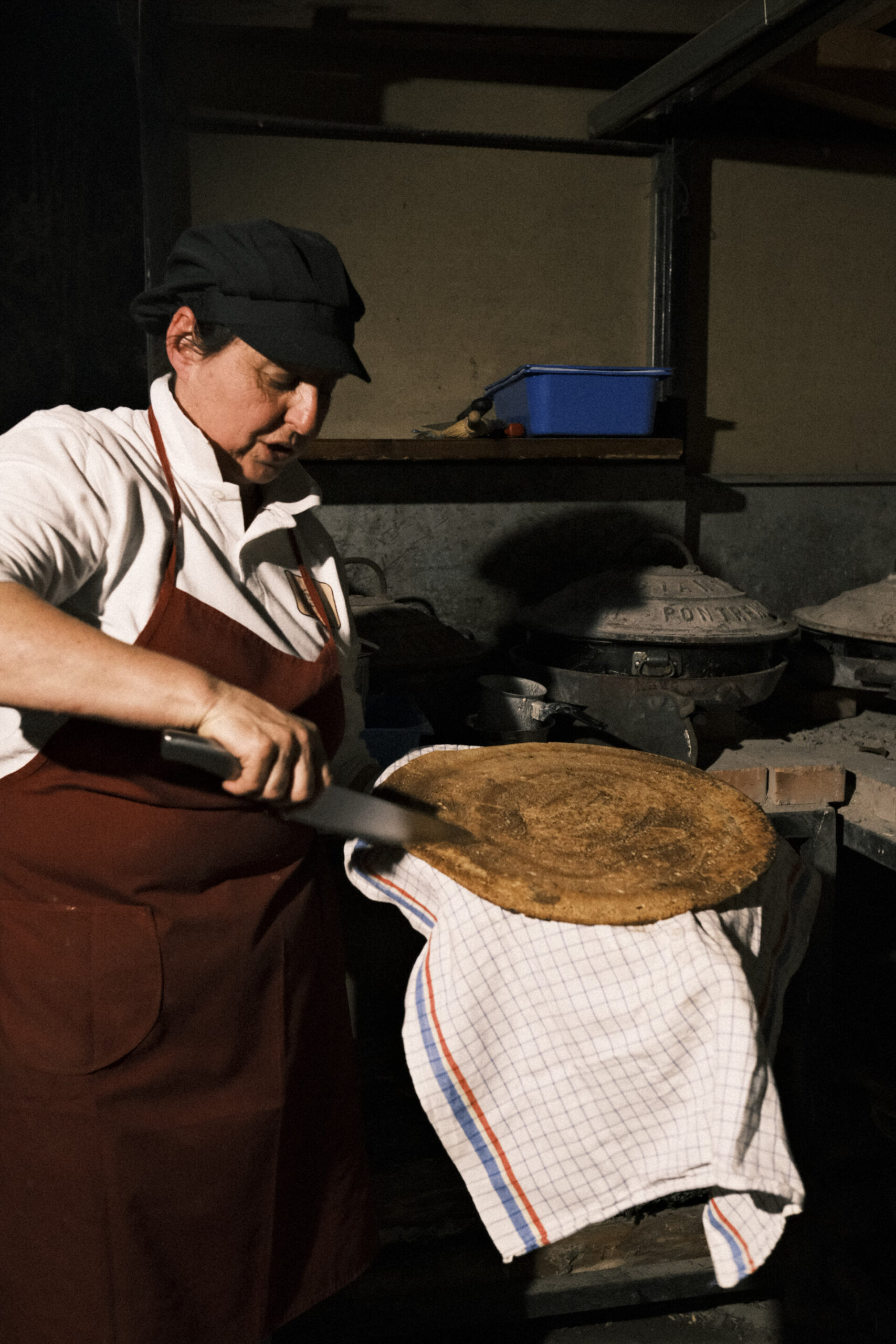
Katia scraping off the excess crust of the Testaroli at La Antica Cascina
Where to Eat in Lunigiana
Agriturismo Vecchia Cascina (Pontremoli) – We’ve already written about Vecchia Cascina at length above, but here’s another reminder. Brave the pilgrimage to enjoy Katia and Giulia’s simplicity and hospitality. Must Order: Testarolo and torta d’erbi.
Pasticceria Gemmi (Sarzana) – Oozing a kind of elegance typical of Italy’s old patrician palazzi, the pasticceria has simply the best pastries in town. Enjoy a coffee at the banco and ask owner Fiammetta Gemmi for her recommendations. Must Order: Spungata.
Fuin (Sarzana) – Born out of an idea from Giacomo Devoto, the Michelin-starred chef of Locanda dei Banchieri, this eatery and bottega is on Piazza Giacomo Matteotti, the very heart of the city. They offer a four-course, all-vegetable tasting menu, a culinary tribute to Antonio Bertoloni, an esteemed 18th-century botanist from Sarzana. Must Order: Frigitelli stuffed with lamb and garlic sauce; the bottega’s delicacies.
Trattoria Armanda (Sarzana) – Located in the nearby Castelnuovo Magra, this historic trattoria is still one of the best spots to taste Lunigiana gastronomy at its purest. Highly recommended for a spring lunch on the terrace with a spectacular view of the Val di Magra.
Caffè degli Svizzeri (Pontremoli) – Founded in 1842 and directly facing Pontremoli’s main square, the cafè feels like a time capsule of a time long gone. Make sure you visit the shop and drogheria too. Must Order: Spongata pontremolese and Amor.
Trattoria da Norina (Pontremoli) – Tucked into an old building on a small medieval alleyway, Norina serves simple local cuisine in a typical trattoria setting. If visiting in summer, make sure to check out the terrace with a view of the river Magra. Must-Order: Testaroli with pesto and patuna with sheep’s cheese.
Where to Drink in Lunigiana
Cantine Lunae Bosoni (Sarzana) – We maintain a good trip wouldn’t be complete without a visit to a good winery, and, when in Lunigiana, you have to start with Cantine Lunae Bosoni. You can make a quick pit stop at the shop or if time allows, stay for a wine tasting and lunch at the historic headquarters. The new winery, which was inaugurated in 2023 and embodies Diego’s vision for the future of the cantina, is an experience in itself.
Must Order: Vermentino Etichetta Nera e Cavagino.
What to Do in Lunigiana
Cattedrale di Santa Maria Assunta (Sarzana) – Built in the 13th century, this cathedral contains the crucifix of Mastro Guglielmo, the oldest known example of croce dipinta.
Fortezza Firmafede (Sarzana) – This military fortification was built in 1249 and later destroyed and rebuilt by Lorenzo Il Magnifico in 1487. Located in the historical center of the city, the fortress, together with the Sarzanello Fortress, is a reminder of the strategic importance Sarzana once held. Both are Renaissance military museums today.
Mercato Slow Food (Sarzana) – On Saturday mornings, go to the piazza to get a real Italian market experience with chilometro-zero, organic produce. Look for Pier Paolo Piagneri and his unique cheeses.
Castello del Piagnaro e Museo delle Statue Stele (Pontremoli) – This unique medieval castle has a breathtaking view of Pontremoli and the surrounding valley and is the place to admire the statue stele, ancient menhirs dating back as far as the third millennium BC.
